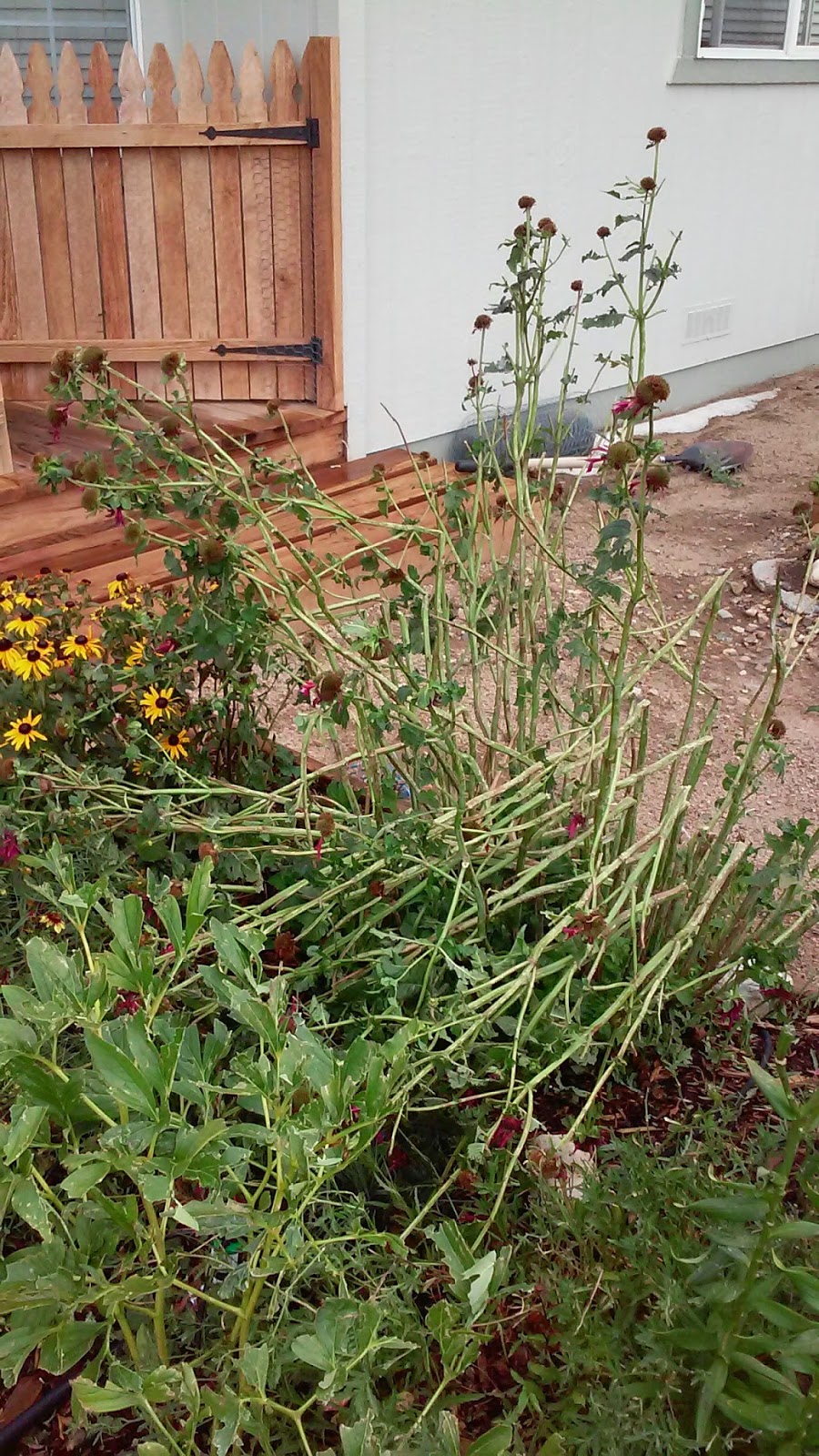Every fall, right around the first light frost of the season, I’ll gather several Geraniums into pots and bring them inside. They’ll keep on blooming for a while then go dormant. Then come spring, they bless me with another season of blooms. Although this is one way of overwintering Geraniums, there are several others:
Bare Root Method:
This is the easiest and most traditional way of keeping Geraniums.
** Dig them up and shake the soil from the roots.
** Hang the plants upside down in a cool place—a cellar usually, but a paper bag will suffice.
** About once a month, water the roots by placing them in a bucket of water for about an hour or so.
** In the spring, prune the stems and pot them.
** Water thoroughly
Move plants inside:
I like this way best because it brings the color inside and I get to enjoy them for a little while longer.
** Prune the geraniums to about 1/3 of their original height and put them in pot.
** They will need a very bright room or sunny window in a cool room.
** Water only when the soil is dry.
** Keep them pinched back to avoid leggy limbs.
** In the spring water and set outside.
Take Cuttings:
I’ve not tried this method with Geraniums, but I’ve done it with other plants.
** With a sharp knife cut the top 3 to 4 inches from the ends of the plant
** Pinch off the lower leaves and stick the cuttings in rooting soil in a pot with good drainage.
** Place a plastic bag over the cuttings and container to act like a miniature greenhouse.
** When they have rooted, move into their own pot and on outside when the weather is warm.
A few things to consider:
** The older the plant, the woodier the stems become and in the end will bloom less often. This may happen with either of the first two methods.
** You need to watch for diseases and insects such as aphids, gnats, or spider mites. Especially if you have other indoor plants.
** Use only the healthiest plants.
Your turn: Have you ever brought Geraniums in for the winter? If so, which method did you use?












